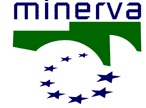
|
|
|
|
|
|
|
|
|
 |
Path: Home » Publications » Handbook on cultural web user interaction »
Table of contents » Chapter 2 » Chapter 2.2
|
| |
Handbook on cultural web user interaction
|
2.2 Web application types Which kind of web application do I plan to build?Schematic presentation of the main types of web applications that cultural subjects can promote as tools for achieving their mission in whole or in part. Some types has been already more deeply analysed in chapter 1 2.2.1 Website (see also 1.1) A website is a collection of web pages, that is to say a hypertext structure of documents (called web pages) that are accessible with a browser through the World Wide Web. A web page is usually in HTML/XHTML format; it contains hypertext links that facilitate navigation from one page or section to another; it often uses graphics that in their turn can also be active links. A dynamic web page is a page the contents of which is as a whole or in part generated on the fly by the server and it can therefore be different every time that it is called up. This means that the HTML language is not used directly, but programming languages (scripting languages) are used; these deal with creating the page at the time when it is visited, and with user interaction. We can therefore identify two main types of websites: 2.2.2 Web application Web application is a term used within the sphere of software engineering, to describe an application that is accessible via the web. Web-based applications contribute to implementing wholly or in part many common software solutions such as webmail, e-commerce, web forum, blog, MMORPG and many more besides. Common examples are those applications that permit us to search on the web, to cooperate in projects, to purchase products from an auction, etc. In recent times, very advanced web applications that make it possible to replace the application software usually loaded on one’s PC, moving it onto a server web, are becoming common: popular examples are some server-side multimedia readers and the Google Apps package (Calendar, Docs, PageCreator..). A Forum (message board, bulletin board…) is an online location for discussion through the publication and reading of messages, organized by subject (thread), messages (post) and replies to messages (reply). In contrast to chat, which is a synchronous communications tool, a forum is asynchronous inasmuch as the messages are usually written and read at different times. The administrators are usually the managers of a forum and they normally are able to modify, cancel and move any message. They can usually also close the forum, change it, bring changes to the software, expel, cancel or create users. Moderators may assist the administrators. 2.2.4 Blog 2.2.5 Wiki 2.2.6 Web portal (see also 1.1.6) A web portal is a website that forms an entrance gate to a good-sized group of resources on the Internet or on an Intranet. The most important web portals provide a wide range of commercial or cultural services, content and collaborations. Many of the portals were born as Internet directories (like Yahoo!) and/or as search engines (among the first Excite, Lycos, Altavista, infoseek, HotBot). The list of offered services (web mail, personalization and chatroom procedures, for example) was then extended so as to consolidate the user base and lengthen their time of stay within the site. The portal tool orders, addresses, chooses, organizes and facilitates access to the many resources present in the web, which is increasingly full of data and information that is non-structured and therefore hard to retrieve and for which it is hard to evaluate the reliability. Within the cultural sphere, one of the main functions of portals is that of gathering together resources that come from various reliable sources, to improve the quality of user search results. 2.2.7 Database management system A database site is a web facility, the main use of which is to enable the user to search for and retrieve information. A database management system, available online or not, allows to record, edit and extract data from a database (a collection of permanent data, based on a schema). 2.2.8 Web service A web service is a software system designed to support interoperability between different computers on one network. A fundamental characteristic of Web Service is that of offering a software interface through which other systems can interact with the web service. Other systems request the web service to carry out specific operations by sending a message to the software interface in the form of a SOAP (Simple Object Access Protocol) “bag”. The protocols and formats of web services of data are, where possible, in text format, thus making them more easily understood and used by developers. This makes it possible to interoperate between different software applications on different hardware platforms, using “open” standards and protocols. 2.2.9 Online social network 2.2.10 Web games Video games are evolving, building on the spread of household consoles that can connect to the Internet, so that the players are part of a huge world community and can play wherever they are (see 2.5.6.8). Some games, on the other hand, such as the so-called MMORPG (Massive(ly) Multiplayer Online Role-Playing Game), can be used through web browsers. These are played contemporaneously by thousands of people controlling characters that evolve together with the world that surrounds them and in which they live. 2.2.11 MUVE |
|
|
|
|
Copyright Minerva Project 2008-09,
last revision 2008-09-19, edited by Minerva
Editorial Board. | |